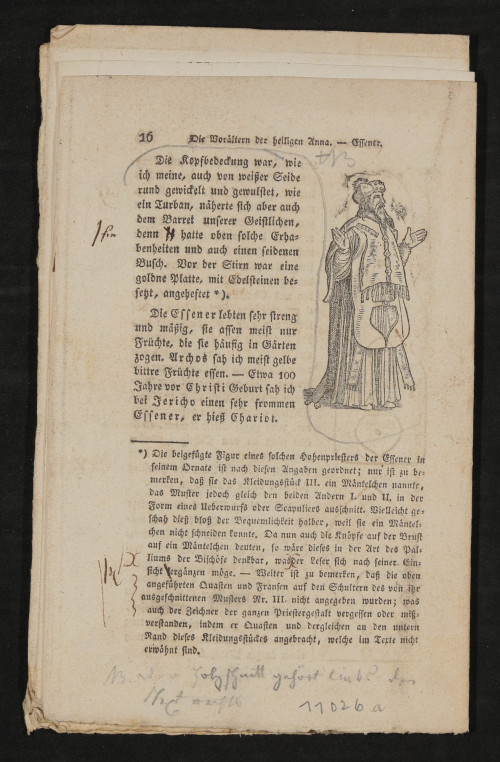Clemens Brentano, who had been baptized a Catholic, was in a phase of religious awakening when, in 1816, he learned of the former Augustinian nun Anna Katharina Emmerick in Dülmen, Westphalia. So-called “stigmata” had appeared on her body — that is, marks corresponding to those left on Christ by the Crucifixion.
Anna Katharina Emmerick was born in impoverished circumstances in Coesfeld in 1774. Drawn to religion at an early age, she became a novice at Agnetenberg Convent in Dülmen when she was twenty-eight. When the convent was abolished in 1811, she went to work in the household of a priest. There her health deteriorated to the point where she was no longer able to leave the house. Bloody marks appeared on her hands and feet, and wounds like the traces of a crown of thorns on her head, causing her to wear bandages. For twelve years, she experienced Christ’s suffering in mystical visions accompanied by the frequent recurrence of the stigmata. These unusual occurrences sparked the public interest. In 1819, the Prussian state appointed a commission to investigate the case, but no evidence of fraud was found. Emmerick’s story still moves many believers today. She was beatified by Pope John Paul II in 2004.
Brentano travelled to Westphalia in the autumn of 1818 to meet Anna Katharina Emmerick in person. He was so fascinated by her that he remained in Dülmen until her death in 1824. He spent countless hours at the bedridden woman’s side, keeping notes on everything she said. He was convinced that, 1,800 years after the life of Jesus, the visions of a deeply religious woman granted direct access to the Christian event of salvation.
The material Brentano had gathered in Dülmen kept him occupied for nearly twenty years, resulting in some 16,000 written pages. A small selection from his more than 7,000 pages of diary entries is on display on the wall, and six of these pages are introduced in detail at the audio stations. From the start, Brentano supplemented Emmerick’s often incoherent utterances with his own reflections, thus producing the written recollections he later published.
His aim was to write three books based on his notes. The Dolorous Passion of Our Lord Jesus Christ came out during his lifetime, the Life of the Blessed Virgin Mary was already half typeset at the time of his death in 1842, and the Formative Years of Jesus were published posthumously. Yet although these works met with lively interest on the part of the readers, Brentano never completed his planned biography of Emmerick. In 1998, the writer Kai Meyer wrote the novel Das Gelübde (The Vow) about the encounter between Clemens Brentano and Anna Katharina Emmerick. This display features a short excerpt from the 2007 movie by Dominik Graf based on Meyer’s book.
Objects
-
CLEMENS BRENTANO
Dülmener Tagebücher (1818/19 und um 1825)
-

CLEMENS BRENTANO
Das bittere Leiden unsers Herrn Jesu Christi. Nach den Betrachtungen der gottseligen Anna Katharina Emmerich, Augustinerin des Klosters Agnetenberg zu Dülmen († 9. Febr. 1824.) nebst dem Lebensumriß dieser Begnadigten
1833
-

CLEMENS BRENTANO
Leben der heil. Jungfrau Maria. First proof, 1840